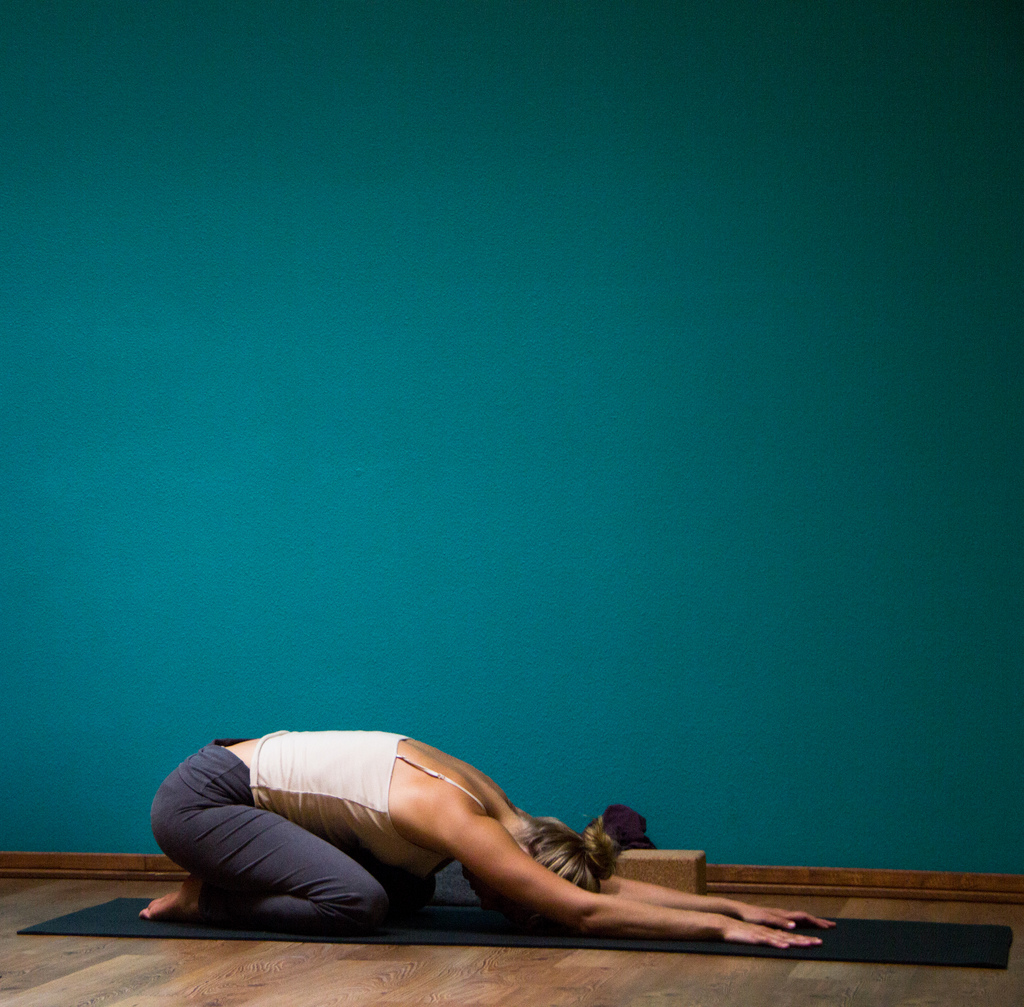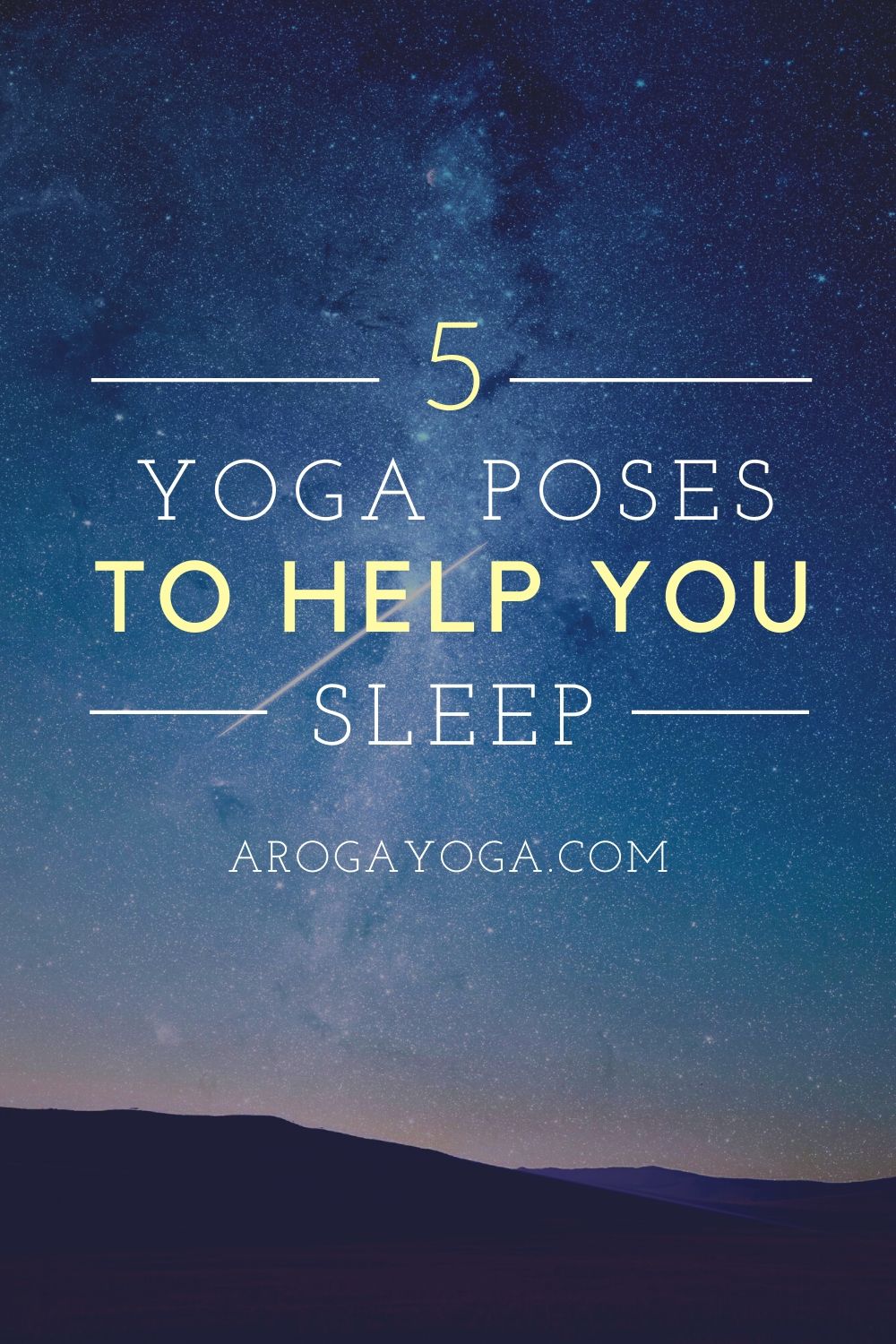You don’t have to suffer from sleep disorders like insomnia to be concerned about the quality of your sleep. Many of us struggle to fall asleep on a fairly regular basis or suffer from disturbed sleep because of our hyperactive lifestyles. We’re constantly bombarded with information and exposed to digital screens through much of our waking hours, making it hard to relax and wind down when it’s time to sleep. In fact, if you’re anything like me, you probably wish you could curl up in bed through much of the day, but then struggle to drift off once you’re finally tucked in. In such situations, a yoga sleep routine is just what you need. It’s the perfect way to ease your body and mind into a state of restfulness, preparing you for a good night’s sleep.
Yoga Poses for Sleep
Childs Pose (Balasana)

It’s one of the simplest yoga poses and it’s also super relaxing. Not surprisingly, it is commonly used as the starting point for many yoga routines, not just in those for sleep. This gentle forward bend helps tune out most external stimuli, helping calm the mind and lowering stress levels almost instantly. The pose also gently stretches and lengthens the spine, releasing any tension in the neck, shoulders, and back.
- Start in the kneeling position, with your feet together and buttocks resting over them
- Draw your knees apart so that they are at hip-width
- Exhale and lower your torso forward so that your tummy comes to rest on the thighs, while your head rests face down on the floor
- Your hands should be extended so that your palms are also flat against the floor above your head
Reclining Butterfly (Supta Baddha Konasana)

The reclining butterfly pose is another effective asana to put your body into the rest mode and prepare for sleep. It helps to slow down your heart rate, completely relaxing the body and making it much easier to fall asleep.
- Lie flat on your back with your legs and arms extended completely
- Bend your knees and bring the soles of your feet together while keeping the length of your legs on the floor
- If your hips feel too tight and you cannot keep your knees down to the floor you can also rest them against a cushion or bolster
Legs Up the Wall (Viparita Karani)

Regarded as a restorative pose that is often prescribed for anxiety disorders, legs up the wall should be included in any yoga routine to fight stress. The gentle inversion stretches out the back of legs, while reducing pressure on them and it also improves circulation and reduces muscular tension in the body.
- Lie down alongside a wall so that your hip and shoulder is in contact with it
- Raise your legs and rotate your body simultaneously, moving your head and torso away from the wall, while your legs come to rest against it
- Your body should form a 90 degree angle, so make sure that your buttocks are in as close contact as possible to the wall
- Although your legs must be completely straight, your body should also be relaxed
- Practice deep breathing as you hold the pose
Paschimottanasana (Seated Forward Bend)

The seated forward bend isn’t really challenging, but its best practiced after you’ve warmed up with a few other poses. It stretches out the back and spine completely, relieving tension in the shoulders, neck, and back, helping you relax completely.
- Sit down with your legs extended before you and slowly raise your arms above your head
- As you exhale, lean forward lengthening your back and grab hold of your feet with your hands
- If you cannot stretch and bend forward to hold your toes comfortably, reach out to any part of the legs instead
Corpse Pose (Savasana)

Any yoga session that includes this pose witnesses at least one participant drifting off to sleep in the studio! That’s good enough reason to include the corpse pose in any yoga routine for sleep.
- Lie flat on your back, legs some distance apart, arms beside you, and palms facing up
- Close your eyes and while staying still, focus on and relax each part of your body from head to toe
- As you do so, take slow and deep breaths concentrating on the feeling of relaxation and on each breath
If you aren’t convinced about the efficacy of yoga for sleep yet, you might be reassured by the findings of a national health survey – up to 55% of yoga practitioners claimed that the practice improved their sleep quality. Such outcomes are most likely linked to the stress reduction effects of yoga, as insomnia is often linked to stress disorders. Also keep in mind that each of these poses should be held for at least 2-3 minutes for the full relaxation effect.

 This is a guest post from Shaun DMello. Shaun DMello is a prolific writer who has worked with a wide range of health and wellness brands for over a decade. His main areas of expertise are nutrition, fitness, natural medicine, public health, and health care technology. When he’s not writing, you can find him reading a good book, curled up on a recliner, jostling for space with his four cats.
This is a guest post from Shaun DMello. Shaun DMello is a prolific writer who has worked with a wide range of health and wellness brands for over a decade. His main areas of expertise are nutrition, fitness, natural medicine, public health, and health care technology. When he’s not writing, you can find him reading a good book, curled up on a recliner, jostling for space with his four cats.





